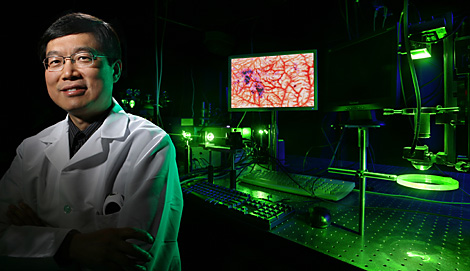Innovators who created smarter materials and new medical imaging awarded honorary doctorates
– Published 19 December 2013

Professors Lihong Wang, Washington University, and Leslie Banks-Sills, Tel Aviv University, have been awarded the 2013 honorary doctorates at the Faculty of Engineering (LTH) at Lund University.
Leslie Banks-Sills is honoured for her work to develop ‘composites’, in which the best properties of several different materials are combined to produce unique properties that do not exist in the separate materials.
A smart composite is thus many times stronger than the strongest of its component materials.
“One plus one doesn’t just make three; it can make five or six”, said Per Ståhle, Professor of Solid Mechanics and the proposer for the award.
A few years ago, Leslie Banks-Sills was a Lise Meitner Professor at Lund University and has since then continued her collaboration with Lund researchers, not only at Per Ståhle’s division, but also with physicists, chemists and biomedical engineering researchers, on projects concerning composites, hydrogen embrittlement and mechanically stimulated bone growth. The construction of MAX IV and ESS creates good potential for wider collaboration.
Leslie Banks-Sills has gained major international recognition for her work and is the chair and editor respectively of a number of leading international bodies and journals.
Lihong Wang has been one of the prominent figures in the development of completely new photoacoustic imaging technology in biomedicine, where the advantages of ultrasound and optical imaging are combined in a “brilliant way”, according to proposer Stefan Andersson-Engels, Professor of Atomic Physics.
“His groundbreaking and internationally recognised research has played a major role for many of those in physics, medicine and engineering who work in this field. He is also a popular and regular guest lecturer at Lund University”, he said.
Unusually sharp images of biological material are one of the results. The close collaboration with the Chinese-American researcher comes from Lund’s strong tradition of research in ultrasound technology and biomedical optics.
An interdisciplinary ‘advanced study group’ entitled MIMIC (Multiple Imaging Modalities for Improved Care) was started recently at the Pufendorf Institute at Lund University, and technology that owes a lot to Lihong Wang plays a key part.
Kristina Lindgärde, English translation: Hannah Mellors.
